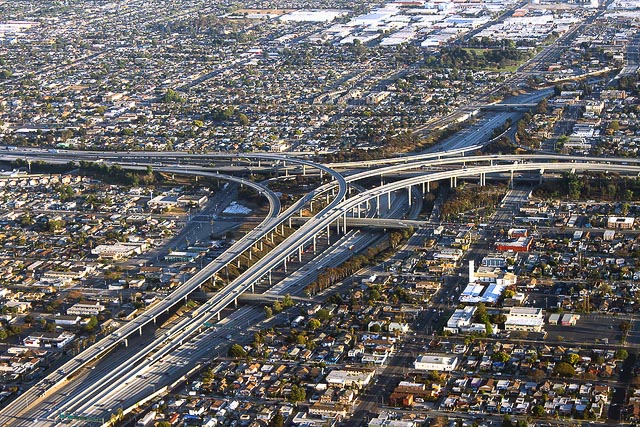This item was originally published in the April 2016 issue of Governing magazine.
I live in Midtown Houston just off the end of the “527 Spur,” a freeway stub that feeds traffic in and out of downtown. My neighborhood, once known as Little Saigon, is booming with new apartment buildings, bars and restaurants. It’s a quick car or transit ride to either of the city’s two biggest job centers: downtown or the Texas Medical Center. It’s also just a 10-minute commute via freeway to a third giant job center, the Galleria area.
I lived in a similar neighborhood in San Diego. Little Italy, located downtown, was within walking distance of my job at city hall. But most people in my neighborhood commuted to work by driving north on Interstate 5, out of downtown, toward the job centers in La Jolla and Mira Mesa. Every morning when I looked out my window at I-5, I saw the evidence. Traffic was backed up going out of the city.
We’re getting used to the idea that people want to live at the center of American cities, where they don’t have to rely as much on their cars and have ready access to culture, sports, food, entertainment and, yes, jobs. But one trend that’s been overlooked is the reverse commute. Many of the people who choose to live downtown actually work in the suburbs. And, ironically, it’s the much-maligned urban freeway system that makes this lifestyle possible.
Urban freeways are often blamed for dividing and damaging urban neighborhoods, especially in poor and minority areas. There’s a growing movement to tear them down and replace them with surface streets. There’s a pending plan, for example, to remove the section of Interstate 45 that divides downtown and Midtown Houston.
But our urban freeway systems are one of the drivers of today’s urban renaissance. They originally plowed through city neighborhoods to make it easy for suburban commuters to get to jobs in downtown areas. Now they make it easy for commuters to get out. And that’s helping fuel the downtown housing boom.
In San Diego, for example, close to 50,000 people now live downtown, and that number is growing fast. But the number of people who work downtown is holding steady at around 60,000. There is even some concern that that number will decline as more jobs move to suburban job centers. It’s housing, not jobs, that’s driving downtown San Diego’s success. The same is true in other cities as well. If these housing markets had to depend on downtown job opportunities, there’d be much less construction.
At the same time, these suburban job centers are becoming denser. Think of the Galleria, or Century City in Los Angeles, or Tysons Corner in Northern Virginia. Someday all these centers will likely not only be well served by freeways but by transit too. Tysons already is, Century City may soon have the “Subway to the Sea” and a potential light rail line to the Galleria is a perpetual topic of controversy in Houston.
Until then, the freeways are a lifeline to and from downtowns. And that means that when I go to the sports bar across the street from my apartment, my neighbors are looking pretty happy to be living a car-lite urban life -- once they’ve stowed their car in a parking garage for the night.


